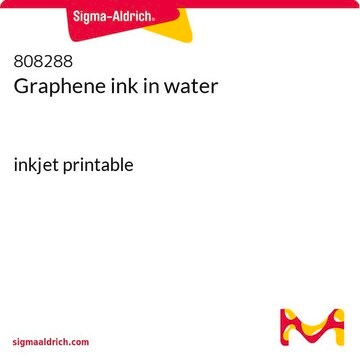805556
Graphene dispersion
In water, flexo/gravure/screen printable
Synonym(s):
conductive ink, graphene ink
About This Item
Recommended Products
product name
Graphene ink in water, flexo/gravure/screen printable
Quality Level
form
liquid
concentration
7 wt. % solids in water
sheet resistance
10 Ω/sq, 25μm thickness
particle size
500-1500 nm (exfoliated graphene flakes)
viscosity
140 cP (1000s-1)
570 cP (100s-1)
Looking for similar products? Visit Product Comparison Guide
Related Categories
Application
- Typical substates: glass, paper.
- Drying Condition: 100°C for 10min.
Storage Class Code
12 - Non Combustible Liquids
WGK
WGK 1
Flash Point(F)
Not applicable
Flash Point(C)
Not applicable
Certificates of Analysis (COA)
Search for Certificates of Analysis (COA) by entering the products Lot/Batch Number. Lot and Batch Numbers can be found on a product’s label following the words ‘Lot’ or ‘Batch’.
Already Own This Product?
Find documentation for the products that you have recently purchased in the Document Library.
Customers Also Viewed
Articles
Since its discovery little more than a decade ago,1 the two-dimensional (2D) allotrope of carbon—graphene—has been the subject of intense multidisciplinary research efforts.
Professors Tokito and Takeda share design principles and optimization protocols for organic electronic devices, focusing on flexibility and low cost.
Advances in scalable synthesis and processing of two-dimensional materials
Our team of scientists has experience in all areas of research including Life Science, Material Science, Chemical Synthesis, Chromatography, Analytical and many others.
Contact Technical Service










